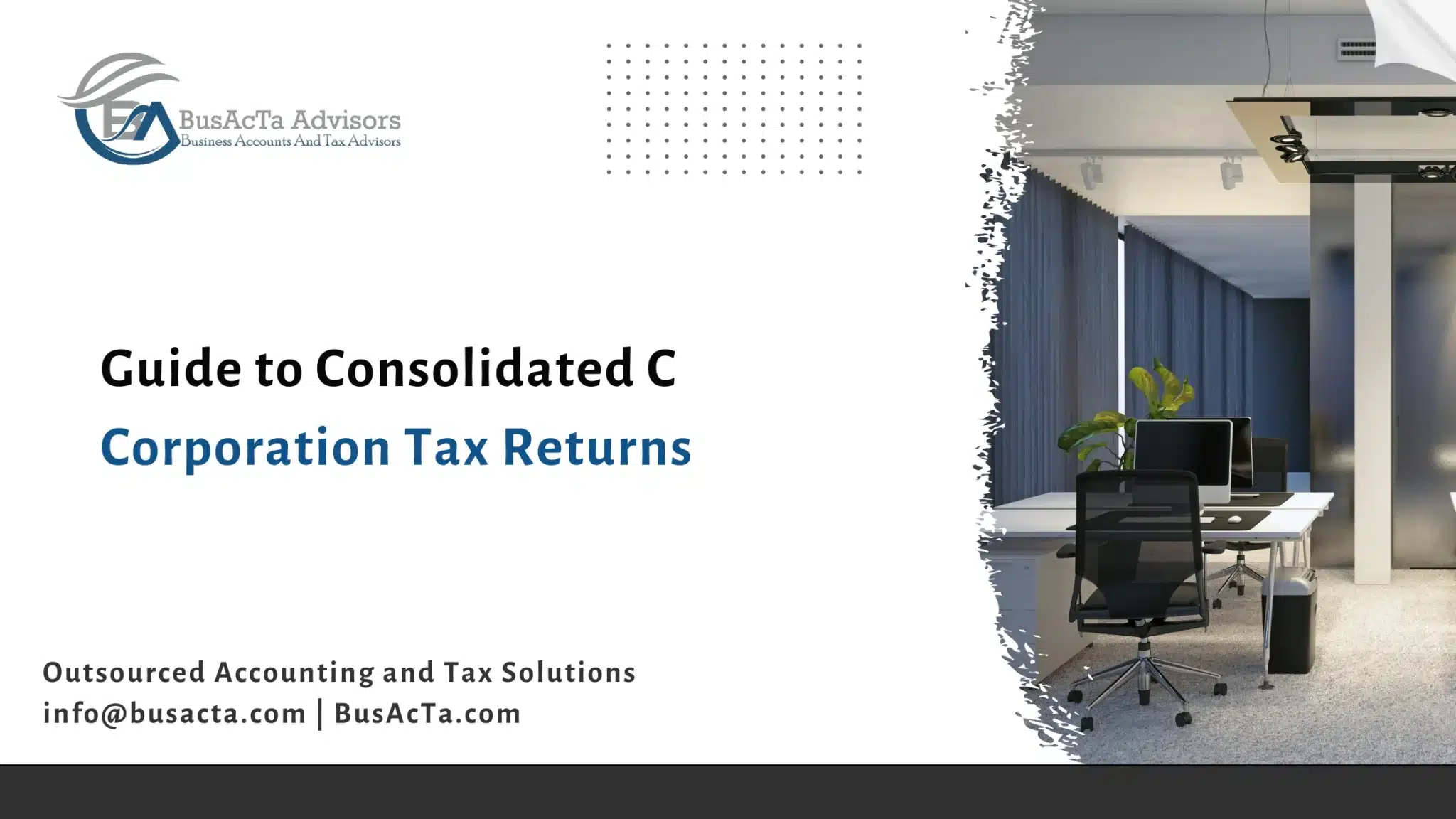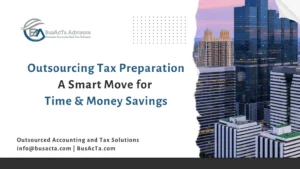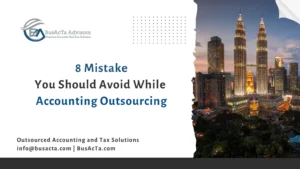Introduction
Consolidated tax returns can be hard for companies that have more than one subsidiary. When companies own other companies, they have a choice to file consolidated tax returns that list all of their income, deductions, gains, losses, and credits. This guide walks you through the complicated process of filing a consolidated tax return. It can help you make your business tax obligations easier and maybe even lower your tax bill.
What is a Consolidated C Corporation Tax Return?
A Consolidated C Corporation Tax Return, also known as IRS form number 1120, lets related companies file a single tax return with the IRS instead of each one filing their own separate return.
With a consolidated tax return, all of a company’s tax obligations and benefits are combined into one single tax entity. Not only does this make reporting easier, but it also lets the parent company use the profits of one subsidiary to offset the losses of another, which could lower the total taxable income.
By learning about the rules and using this filing status, a corporation can have a big effect on its overall financial health.
Eligibility Criteria for Filing a Consolidated Tax Return
To file a consolidated tax return, corporations need to meet certain requirements. The main thing is that the parent company has to own at least 80% of the voting power and value of the stock in the subsidiaries that are part of the deal.
It has to be clear who owns the business, and each company in the group has to give permission for the consolidated return to be filed.
In order to avoid any possible legal problems, it is essential to keep detailed records and provide clear proof of eligibility.
Benefits of Filing Consolidated Returns
- Tax Benefits by Offset of Losses: The tax breaks are one of the best reasons to file a consolidated return. One company’s losses can lower another’s taxable income. This can be especially helpful for new businesses or divisions that are growing but may not yet be making money.
- Simplified Tax Management: Instead of filing multiple tax returns, managing a single corporate tax return can make a lot of administrative tasks much easier and faster. This simplification can result in two main benefits: First, compliance mistakes happen less often; Second, tax preparation takes less time and costs less money.
- Intercompany Transactions: One of the best things about it is that transactions between companies in the group don’t have any tax effects. This includes sales or dividends that come between companies in the group. It’s possible that this will give a more accurate picture of the overall economic performance of the whole corporate family since internal transfers will not get in the way.
Challenges and Considerations
Filing a consolidated tax return can be hard, even though it has some benefits.
- Complexity in Filing: There are a lot of rules and exemptions that you need to know about and do a lot of complicated math in order to make a consolidated tax return. The Internal Revenue Service (IRS) carefully checks these returns, so they need to be very accurate and follow the rules.
- Restrictions on Loss Utilization: Certain restrictions apply to the use of losses within the group. Losses may have limits on how they can be used to cancel out income from other subsidiaries, and they may not always be accessible without any limits.
- Legal Implications: The parent company and its subsidiaries’ legal structures affect the debts that each company has. When groups file their taxes together, they are all responsible for the same amount of money.
Steps to Prepare a Consolidized Tax Return
There are several important steps that must be taken to make sure that a consolidated tax return is filled out correctly and that any possible benefits are maximized:
- Identify Eligible Subsidiaries: It is important to check which subsidiaries meet the 80% ownership requirement so they can be included in the consolidated return.
- Gather Financial Statements: Each subsidiary and the parent company should each send their own financial statements based on which consolidate financial statements will be prepared.
- Eliminate Intercompany Transactions: Determine whether any of the included entities have done business with other companies, and if so, eliminate them. The elimination of these transactions will eliminate the possibility of double-counting income or deductions when transactions occur between subsidiaries.
- Adjust Tax Attributes: It is essential to determine any changes that need to be made for any tax factors, including capital losses, net operating losses, and foreign tax credits. It is critical to make these changes to ensure that they appear correctly in the consolidated amounts.
- Compute Consolidated Taxable Income: Calculate consolidated taxable income by adding the taxable incomes of all corporations included in the calculation, taking into account any adjustments for intercompany transactions.
- Calculate Tax Liability: Determine the tax liability based on the consolidated taxable income, taking into account any eligible deductions and credits.
- File the Return: Fill out and send in IRS Form 1120, which is the U.S. corporate income tax return, along with Schedule O, which has details about who owns the business and other information that is required.
Strategic Financial Planning
When companies think about a consolidated return, they need to make sure they plan everything out very carefully. Within the context of the company’s operations and long-term goals, it is suggested to conduct a thorough investigation to find out if the pros are greater than the cons.
Tax Compliance and Strategy Development
Because consolidated tax returns are notoriously hard to understand, you need a full tax compliance strategy. Working with tax experts who know a lot about corporate tax law and consolidated filings is very important. These professionals can give advice that is tailored to the needs and circumstances of the business group. This makes sure that the rules are followed and that the most tax benefits are taken advantage of.
In conclusion, filing a consolidated tax return for a C Corporation can be very helpful in some situations. To make good use of this option, you need to understand it completely and plan ahead. Always keep in mind that it is in your best interest to talk to tax experts who can give you personalized advice and help you find your way around the complicated world of corporate taxes.
BusAcTa Advisors can help you with your corporate tax strategy in more detail. You can email them at info@busacta.com. Our team can help you stay in line with the law and get the best tax results, so your business can thrive in a world where the economy is always changing.






